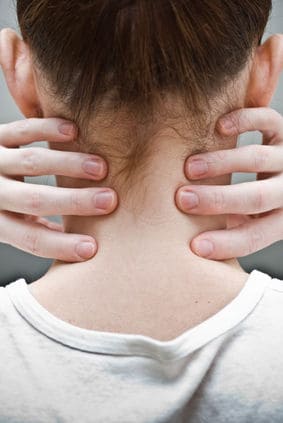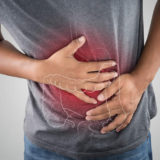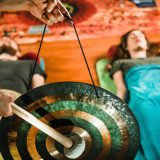

Massage has many benefits and can make us feel terrific, but cost and time issues guarantee that most of us will not be able to get a professional massage every time we need one! Massage therapy can alleviate back and neck pain, lengthen tight muscles, help athletes recover, and improve joint flexibility and circulation. Massage can reduce muscle spasms and cramping, and relax overworked muscle tissue. For all of these reasons, learning a few self-massage techniques may be just the thing to get us through until our next professional massage session.
Strokes
These are the basic massage strokes to employ: effleurage, petrissage, friction, compression, tapotement and vibration.
- Effleurage consists of long, gliding strokes from the far end of a limb and always moving toward the heart, or the medial end of the limb being worked on. Effleurage strokes are great for opening and closing a session.
- Petrissage consists of kneading motions, often described as “kneading dough.” This stroke encourages the release of metabolic waste and brings in fresh blood to the area, improving circulation to the muscles.
- Friction consists of a more precise, deep pressure on a specific section of the muscle. Friction is done by pressing on the skin with little glide, while the pressure and motion is applied to the structures under the skin. Friction can be across the fibers of the muscle (cross-fiber friction) or with the fibers of the muscle.
- Compression is useful when muscle is recovering, such as immediately after a sporting event. Slow, even compressions produce a pumping action, increasing circulation and speeding recovery.
- Tapotement and vibration act to confuse the muscle spindles, allowing the muscle to relax by interrupting the body’s pain cycles. This is accomplished by using a loose fist or cupped hand to “beat” on the muscle in a rhythmic way.
All strokes have one thing in common: they should not hurt! Massage therapists learn to use a pain scale of 1-10, where a 10 is painful. When performing massage, even on yourself, never go over a level of 7 on the pain scale.
Tools
It can be difficult to work on yourself as you simply do not have the reach that another person does and cannot always apply pressure to your own back and body. There are tricks and tools that allow you to get some relief, even if you do not have ideal leverage. One trusty tool is the tennis ball. A neat trick is to put two tennis balls in a sock, tying off the end so that one can be placed on either side of the spine, rolling them along the length of the back. This can also be applied to the neck. Another trick is to freeze some water in a used water bottle, and use that in place of the tennis ball to ice and apply pressure at the same time.
There are also tools available such as the Hobknobber, a large S-shaped plastic hook that allows you to PULL rather than PUSH. After placing the hook around your torso you then pull to apply pressure to the back or neck muscles. Large foam rollers can also be purchased and used to roll out muscle tension.
Massage for Upper Body
Neck
The neck holds some delicate structures, including major arteries. A good rule of thumb when working the neck is that if you feel a pulse, move on.
- Begin working this area by using your right hand to reach up and hook your fingers into the muscles on the left side of the neck. Begin gently, increasing pressure in small increments.
- When you feel the area beginning to loosen up, change over to a circular friction (use whichever hand feels more comfortable at this point), working gently at first and increase pressure as you work. Be sure to follow the muscle from the top along the occiput (just under the edge of the skull) down into the shoulder as far as you can. Remember, friction involves less movement on the surface of the skin and more movement of the muscle under the skin. Do this until the muscle feels more relaxed.
- Finish by returning to the hook action of your fingers, noticing how much looser the muscle feels.
Forearms
I include forearms here as carpal tunnel syndrome is a common problem for people and it is entirely possible to work forearms daily for yourself.
- Begin by extending the left arm fully, locking out the elbow. Then use your right hand to flex and extend the hand as far as possible, pushing fingers up and back, then down and under as far as is comfortable while keeping the elbow locked straight – remember the pain scale and do not exceed a level 7.
- Then repeat this for the right arm.
- Lay your left forearm on a sturdy table palm up, and “cross” your arms so that your right elbow is on the muscles of the left forearm and use it to apply circular friction to the muscles in the left forearm. Move up and down the arm until you have worked it all out.
- Then repeat this action by crossing the left elbow over to apply friction to the right forearm muscles.
Shoulders and Back
Shoulders and back are difficult to work on, and using tools may be the only way to access them by yourself. The most cost effective option is the use of two tennis balls.
- Lie back on the ball while pressing against the wall while rolling a tennis ball along the muscles of the back and shoulders. Roll the ball(s) along both sides of the spine and around the shoulder blades, leaning in when you feel sore, tight spots and allowing the ball to work them out.
Even with limited access to some areas, working on yourself regularly can go a long way toward reducing pain, increasing flexibility and lengthening muscle fibers. Working on your own between massages can help you get the most out of those professional sessions.




